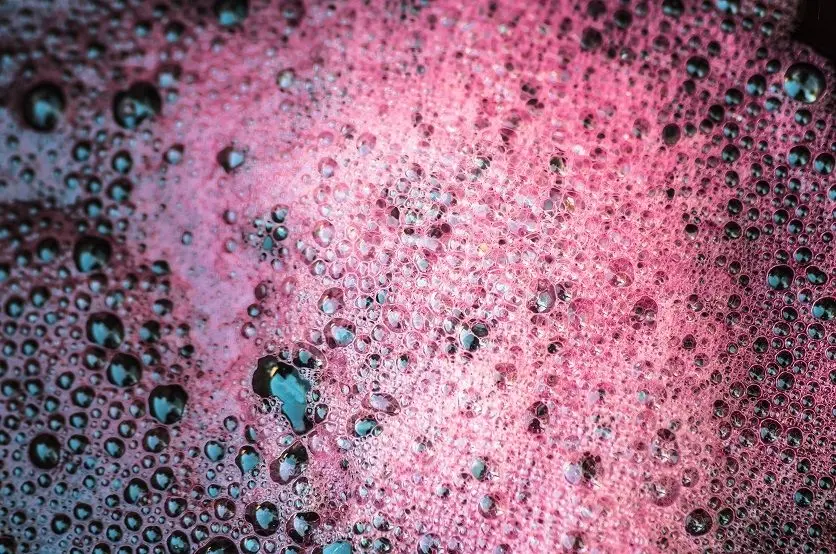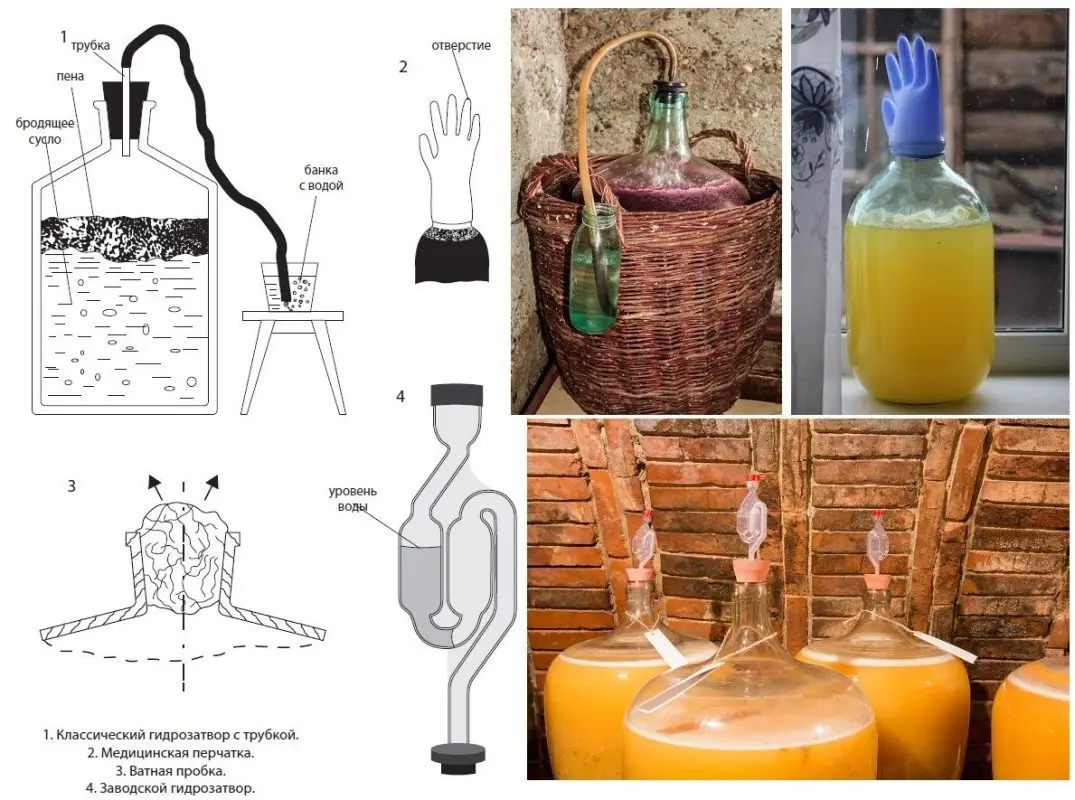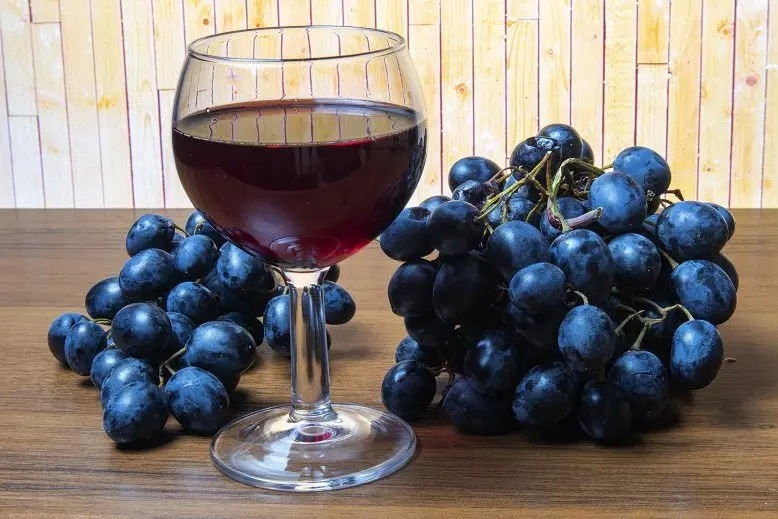Contents
Dry wine is called without sugar or with a minimum content (up to 0,3%). During fermentation, the yeast processes all the fructose in the juice, but the drink is not artificially sweetened. Such wines are considered the most natural, tasty and healthy, but require high quality raw materials. I will tell you how to make homemade dry wine from grapes (red or white) using a simple, effective technology. The recipe uses only berries.
To make dry wine, you need grapes with a sugar content of at least 15-22%. The sweetness of berries depends on the variety and region of cultivation. The colder the climate, the more sour the fruits of grapes (of the same variety).
In industry, sugar content is determined by special devices – a refractometer or a hydrometer with a measuring cup. But the presence of such devices among novice amateur winemakers is very rare. Therefore, the sweetness of grapes at home has to be set approximately, focusing on taste. The main condition is that the berries should not be sour and tart, otherwise there may be problems with fermentation, and the finished drink will be very weak.
The fact is that the strength of homemade dry wine depends on the sweetness of the berries, 1% sugar in the juice gives 0,6% alcohol. For example, with a sugar content of 15%, a wine with a strength of 8-10% is obtained.
Before starting cooking, all used containers must be washed with boiling water and wiped dry, otherwise third-party odors or even mold may appear in the finished wine.
Ingredient:
- grapes – 20 kg.
Dry wine recipe
1. Preparing the grapes
Ripe berries, collected in dry weather, are separated from the ridges and carefully sorted out, discarding unripe, too small and rotten. This is a very important step, because scallops and spoiled berries degrade the wine, making it unnecessarily sour, tart and bitter. It is impossible to correct the taste of a drink from poor raw materials.
Attention! Grapes cannot be washed. On the surface of the peel live wild wine yeast, necessary for normal fermentation, water washes them away. If the berries are dirty or dusty, I recommend wiping with a dry cloth. For the same reason, grapes should not be harvested in rainy weather.
2. Obtaining the wort
The sorted berries are immediately crushed with your hands. The bones must remain intact. Therefore, I do not recommend crushing grapes with a press. Next, you will need not only juice, but also pulp (pomace).
The skin and pulp of grapes contain substances that largely shape the taste of wine. Manual processing of berries promotes the natural release of these beneficial substances and creates suitable conditions for fermentation. The mixture of juice and pomace is called “wort”.
3. Preparation for fermentation
Capacity with a wide neck (bucket, can, enamel pan, etc.) fill three-quarters of the wort, cover with gauze. Further in the course of this stage, the technology for making dry white and red wines is slightly different.
Must for dry white wine to defend during the day at a temperature of 20-25°C. Then drain from the sediment, squeeze the pulp with your hands through gauze. Pour pure juice into a fermentation container with a narrow neck.
Red dry wine is made by the method of initial fermentation of the juice along with the pulp. The container is 3-5 days in a room with a stable temperature of 18-30°C. A day later, the pulp rises up, forming a “cap” on the surface. This dense layer must be knocked down by stirring the must 2-3 times a day, otherwise the wine may turn sour.
The fermenting must foams abundantly, has a rich red color and a characteristic wine aroma. At the indicated time, drain the liquid part from the sediment, squeeze the pulp through cheesecloth or cloth. Pour all the juice obtained (drained and squeezed) into a bottle with a narrow neck.

4. Fermentation
Fill containers for fermentation with juice no more than 2/3 of the volume. Free space is needed for the emitted carbon dioxide, which increases the pressure inside the bottles.
To prevent contact of the wort with air, install a water seal on the neck of the container (see photo). An alternative option is a medical glove with a hole in one of the fingers (pierce with a needle). There are also special closures for glass jars.

The container must always be in a room with a stable temperature of 16-28°C. Active fermentation lasts 25-50 days. Its completion is evidenced by the prolonged absence of bubbles in the water seal or a lowered glove. The drink brightens, and sediment appears at the bottom.
5. Maturation
Pour young wine carefully into storage containers, being careful not to touch the sediment. The easiest way to do this is through a thin tube, setting the containers to different heights (capillary principle). Fill the vessels with homemade dry wine to the very neck and tightly close the lid to prevent contact with air.
The taste of young wine is sharp and unbalanced. This problem is solved by aging in a cellar or cellar at a temperature of 6-16°C. I recommend aging dry white wine for at least 1 month, red – at least 2-3 months. The taste only gets better with time.
As sediment appears at the bottom with a layer of 2-4 cm, it is advisable to filter the wine by pouring it into another container. When the sediment no longer appears, the drink can be bottled for storage. If the temperature regime is observed, the shelf life is 3-5 years.

The video shows the technology of making dry white wine.









